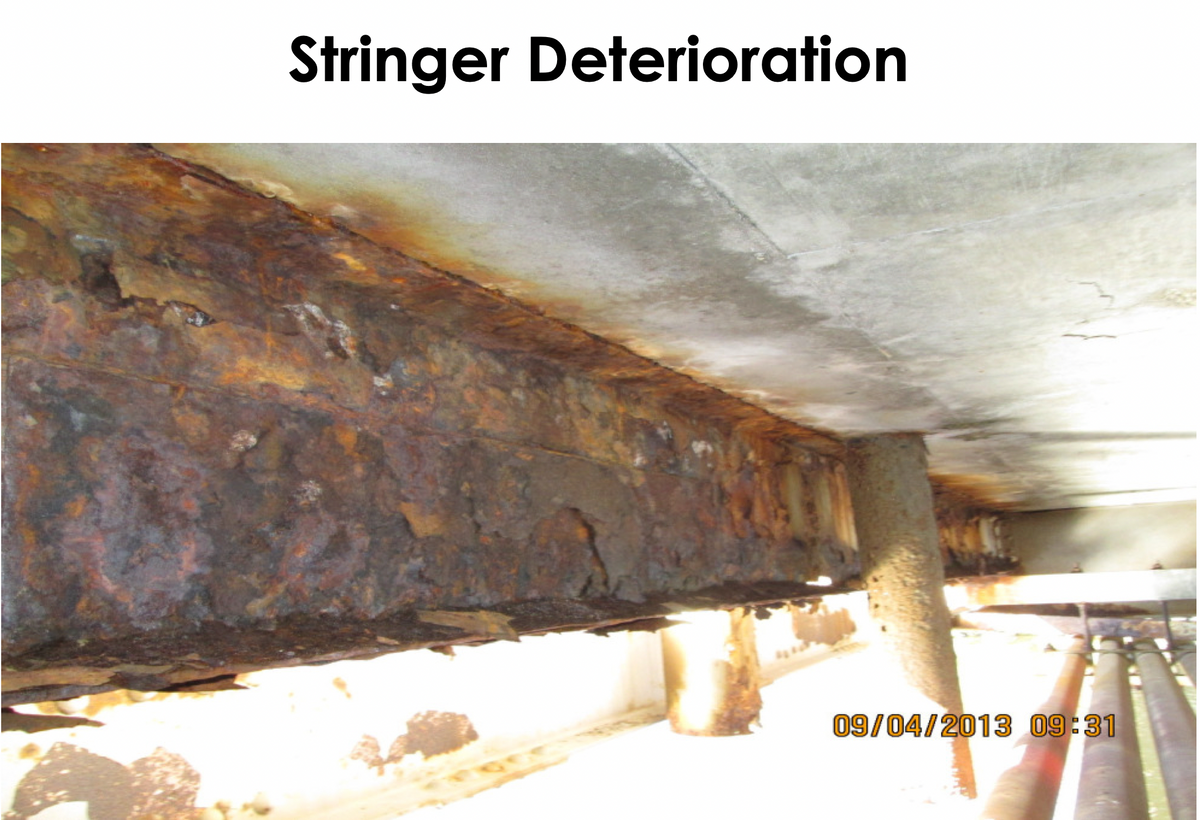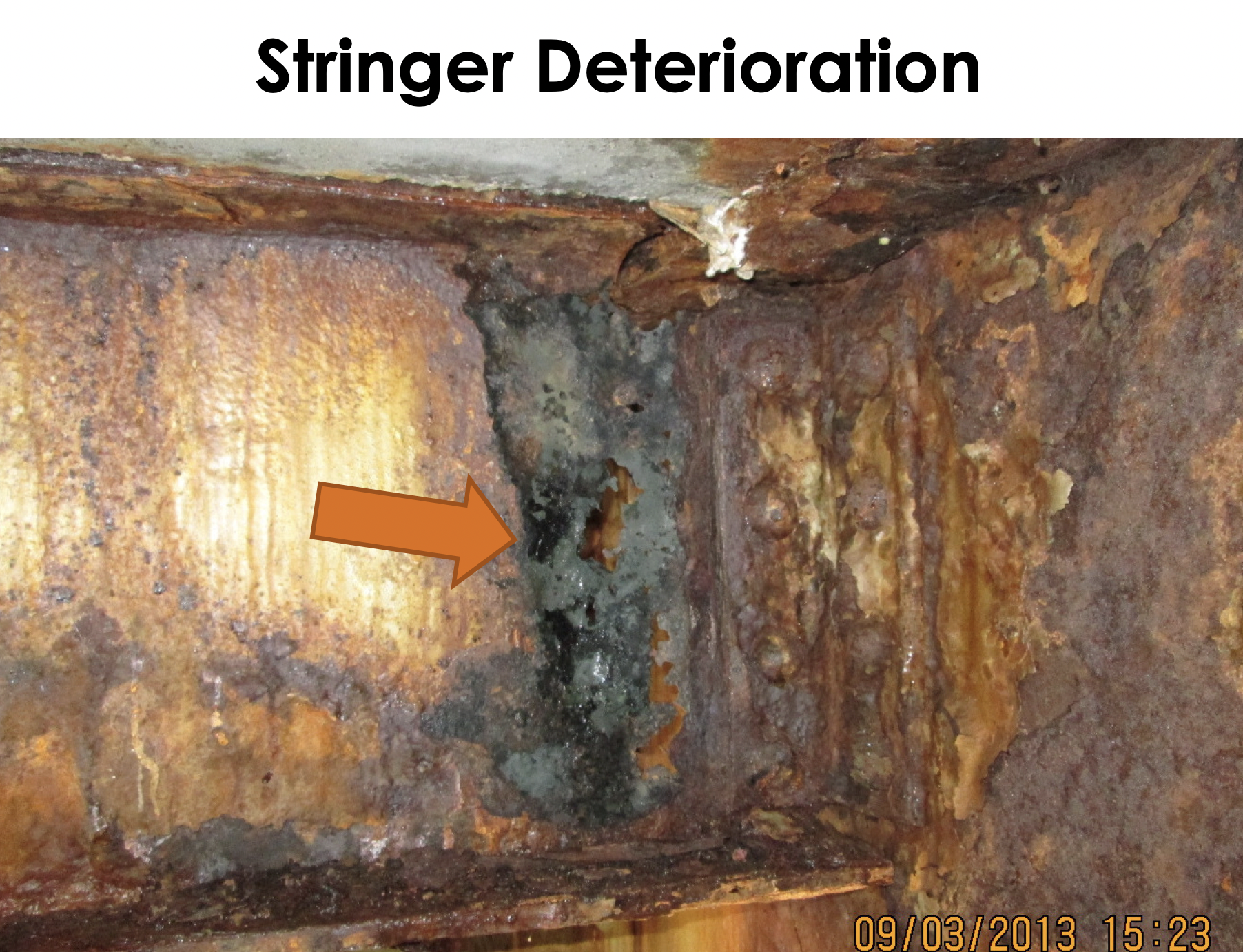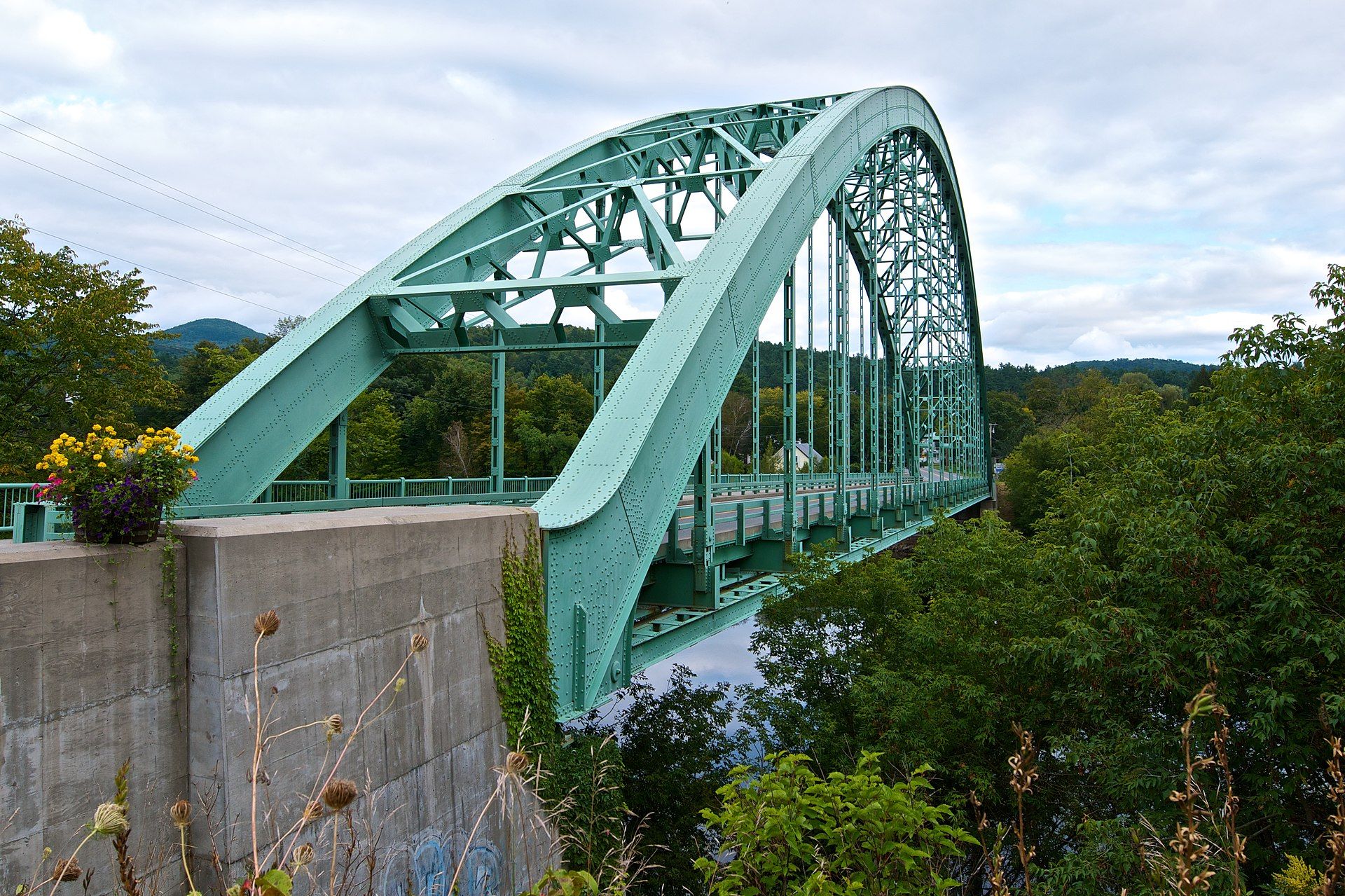Lyme-East Thetford bridge rehabilitation delayed 1 year
"Its rapid deterioration plus the grueling task of a rehabilitation process is obviously deferring engineers and contractors from touching it," Nick Fabrikant said.

You may have seen on the Lyme or Thetford lists that the rehabilitation of the bridge between Lyme and East Thetford, which was expected to fully close the crossing for the construction seasons of 2022 and 2023, has been delayed.
Jennifer Reczek, project Manager for the NH Department of Transportation (NHDOT), is quoted as writing that, “Due to the current supply chain issues and labor market, we did not receive any bids on the project. We will be re-advertising this spring, so work will be delayed until 2023.”
Nick Fabrikant, a Thetford resident, architect, and structural engineer, thinks there’s more to the story: “There were no bids for rehabbing this bridge because it is indeed structurally deficient, and, when it was built, it was the incorrect bridge design from the start (a 1937 double span parker-truss), which makes the rehab process that much more difficult and grueling.”
The bridge is on NHDOT’s Red List, which are “state-owned bridges requiring interim inspections due to poor conditions.” Bridges on this list are inspected twice a year. The Lyme-East Thetford bridge has been on this list since 2013. The condition of the bridge is listed as “poor,” which is better than the other Red List ratings of “serious, failing, closed/failing,” and “closed.” It was ranked #63 on the state’s priority list in 2014 and #6 in 2020.
According to Nick, “The bridge is becoming structurally deficient. There are obvious signs of age. There’s rust on both the steel and the actual steel members – chords, diagonal, struts, stingers. This steel section loss means that the original sized members have shrunk considerably. The bridge only holds a Gross Vehicle Weight Rating (GVWR) of 15 tons and as the oxidation process continues, this rating will need to continually decrease. Plus, there's advanced spalling on the abutments as well as the middle pier.”

Nick believes the bridge needs to be completely replaced by something more practical: “The current bridge doesn't function as a standard loading bridge. A double span parker-truss was often replaced in the 1930's, but not rebuilt as a new span, especially a 460ft gap [such as what we have between Thetford and Lyme]. A 460ft gap is easily achieved as a clear span at this point in time. Multiple spans are inherently more complex.”
To Nick’s point, the Lyme-East Thetford bridge is the longest two-span Parker-truss bridge in New Hampshire, implying that this design is more commonly used on shorter spans.
The Parker truss, named after Charles H. Parker, was patented in 1870.
“Truss bridges in general are characterized by the joining of numerous relatively small structural members into a series of interconnected triangles. They were first built of wood, then iron, then steel or occasionally a combination of the materials.” - NCDOT
Replacing the bridge with something more practical is not that simple, however. The Lyme-East Thetford bridge was added to the National Register of Historic Places in 2020. It was built in 1937 – 67 years after the design was originally patented – to replace a 1890s bridge that was destroyed in a flood. Nick thinks this was a mistake: “This bridge should never have been placed on the Register of Historic Places: It's like placing a Victorian house built in the 1950s on the Register. Just because it's ‘olde-timey’ does not mean it's historic.”
"Don't get me wrong, I deeply value, revere, and honor American civil engineering landmarks; they serve as shining examples of some of humanity's finest and most innovative achievements as well as solid works of local inspiration. This bridge however is rather ordinary unlike the Samuel Morey bridge which received a silver medal for excellence in design for a mid-span bridge from the American institute of Steel Construction, also built in 1937," Nick said.
The Samuel Morey Memorial Bridge connects Orford, NH and Fairlee, VT.

"The East Thetford Lyme Bridge is on the verge of being structurally deficient and is continually getting more so by the month. One can literally look straight through many of the structural chords, diagonals, struts. God forbid this bridge collapses," Nick said.
Residents in Thetford and Lyme have been advocating for better pedestrian and cyclist access on the Lyme-East Thetford bridge as part of its rehabilitation, but Nick doesn’t think that’s likely with the current design: “It’s too narrow of a bridge in the first place; hence no bicycle lane or sidewalk. To add this would necessitate tying it into the main load-bearing structural components that need extensive rehabilitation.
“We're stuck between a rock and a hard place with this structure: It's on the Register of Historic Places but it's not historic. Its rapid deterioration plus the grueling task of a rehabilitation process is obviously deferring engineers and contractors from touching it, but the more they defer, the more the bridge becomes dangerously deficient and so the pattern continues,” Nick explained.
Nick believes there’s a solution: an open and transparent bridge design competition for a brand new bridge. The competition would have appropriate design criteria: standard loading, durability, cost, serviceability, and aesthetics. “The bridge should endure for over a century and honor structural beauty,” Nick suggested.
As for the current bridge? It could be disassembled and repurposed for trails in the White Mountains, or simply recycled.
